Dried Mango – A Journey from the Orchard to the Cupboard
The mango season is in full swing in the Ivory Coast. Our farmers are very busy making sure we get the best mangoes.
To celebrate them, we thought we’d share with you the journey of your favourite dried mango, from the orchards to the cupboard.

Mango from Côte d’Ivoire
Firstly, it’s important to know that there are many varieties of mango in the world.
Their colours, size, and flavours vary depending on the climate, the soil, and other factors.
In the Ivory Coast (West Africa), for example, the sweet and juicy tropical stone fruit grows in the northern part of the country and the season only lasts 3 months – from April to June.
There are two different varieties – Amelia and Kent.
The Amelia variety is not as popular as the latter, so its production has been almost completely replaced by the Kent one.
The Kent mango has an oval shape. The pulp is deliciously sweet, soft, and has a lovely orange colour.

The skin remains green, even when ripe and ready to eat, and has a beautiful red blush. Also, it’s not as thick as the Kent mango from other countries, due to the climatic conditions.
Their appearance is also not as shiny as other mangoes, and that’s simply because most farmers in the Ivory Coast do not add layers of wax to their mangoes.
At the Orchards
Back in 2018, Franck and I had the privilege to visit a mango orchard for the first time.
Our farmers gave us much insight into how they grow and harvest their organic mangoes without the use of any chemicals.
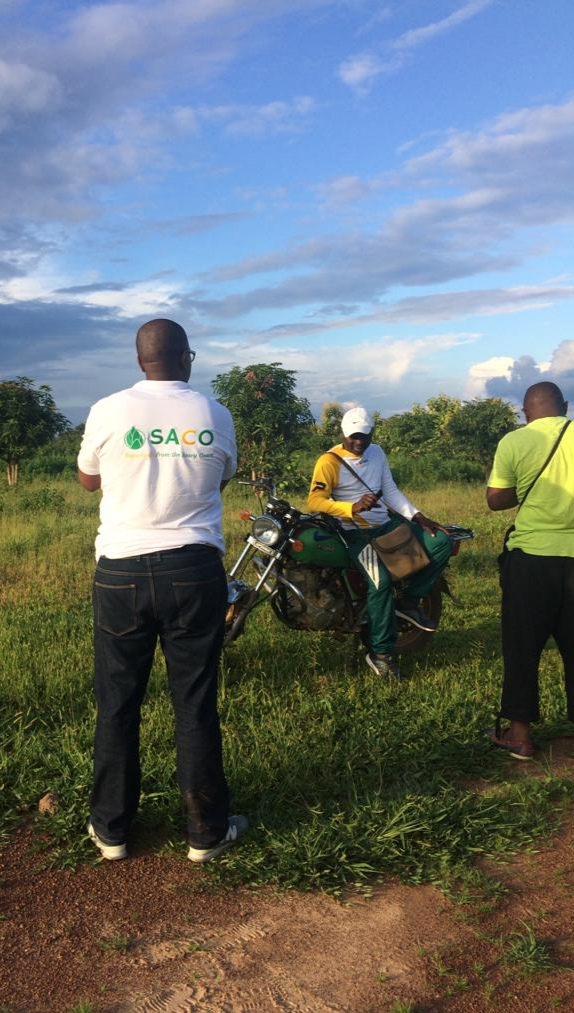
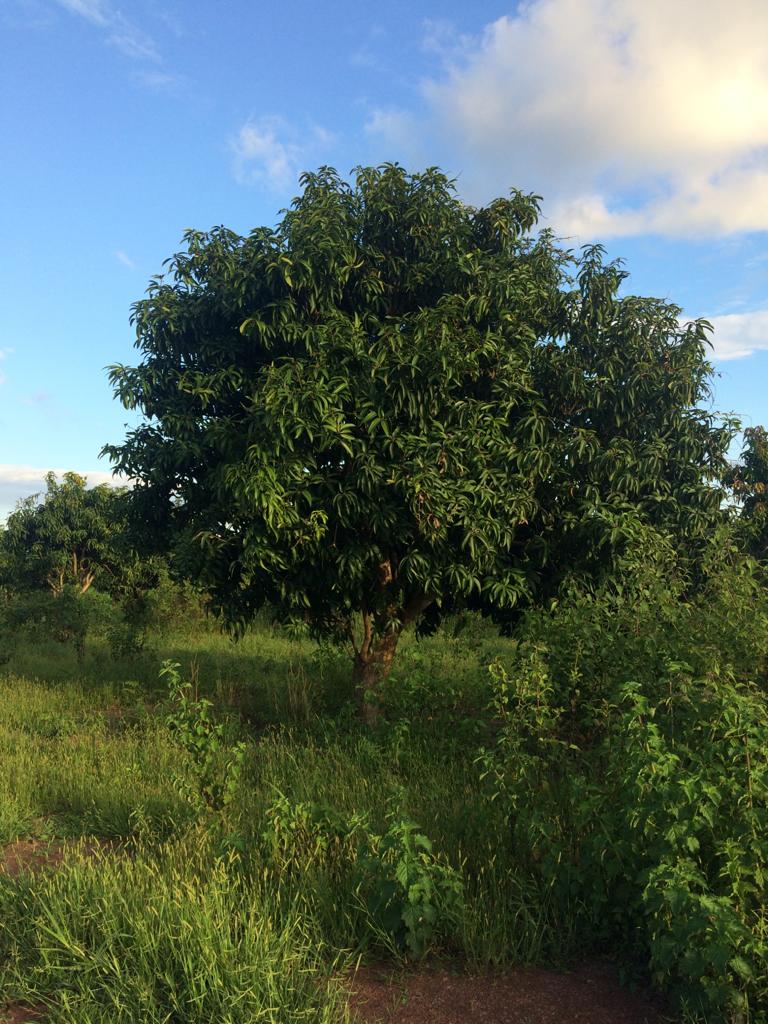
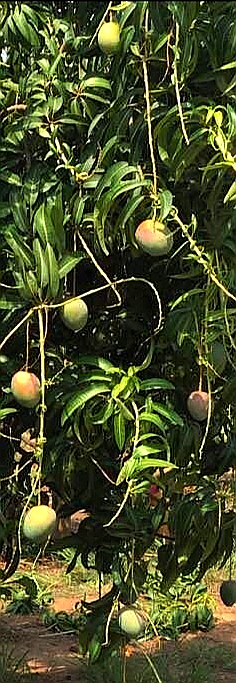
The first thing I noticed when we arrived was the short pieces of fabric attached to some branches.
Some were red, some yellow and other green. I curiously asked what their purpose was.
The farmer explained that trees do not produce their flowers all at the same time. As a result, their fruits also develop in different phases.
So, when the flowering season starts, they attach the red flag to branches with the first flowers; they then use the yellow ones for those that flower next and, finally the green flag, for the last ones to blossom.
After attaching those coloured flags, they make a note of the dates the branches started flowering.
This method helps them keep track of the maturity of the fruits and estimate the harvesting time.
So when the time comes, it is easier for them to identify the mangoes that have reached the right maturity and those that are still too green to harvest.
Of course, time is not the only factor taken into account to assess the maturity of the fruit.
They also look for other signs in the external appearance of the fruit, ie: they make sure the pedicle of the fruit drops inside; they check that the white spots on the skin (also known as lenticels) have turned brown and, finally, they make sure that the hanging point of the fruit is dry – which is a sign that the mango is no longer feeding from the mother plant.
After going through the checklist, they take a sample and cut it open. They then use a colour chart to examine the internal colour of the pulp and, with the help of a refractometer, they check the Brix (the sugar content of the fruit).
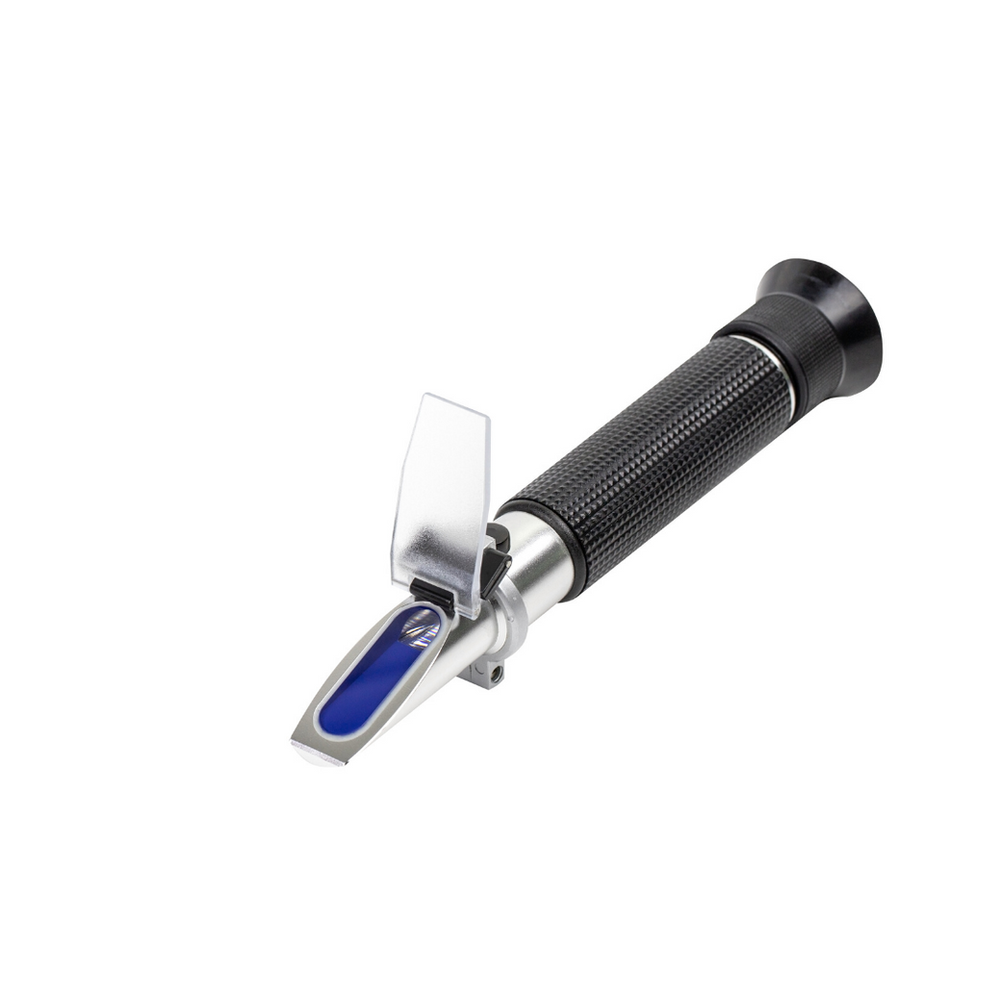
The higher the Brix, the sweeter the fruit.
Another fascinating fact is that the level of maturity the mango needs to reach for harvesting, also very much depends on the market the farmers are serving.
For example, the mango used to make juice needs a higher level of maturity than the one used to make dried mango.
The transformation
After picking the fruit, the mango is carefully plucked and placed in plastic crates.
The crates are then transferred to the packing house and carefully washed to eliminate all impurities and sorted.
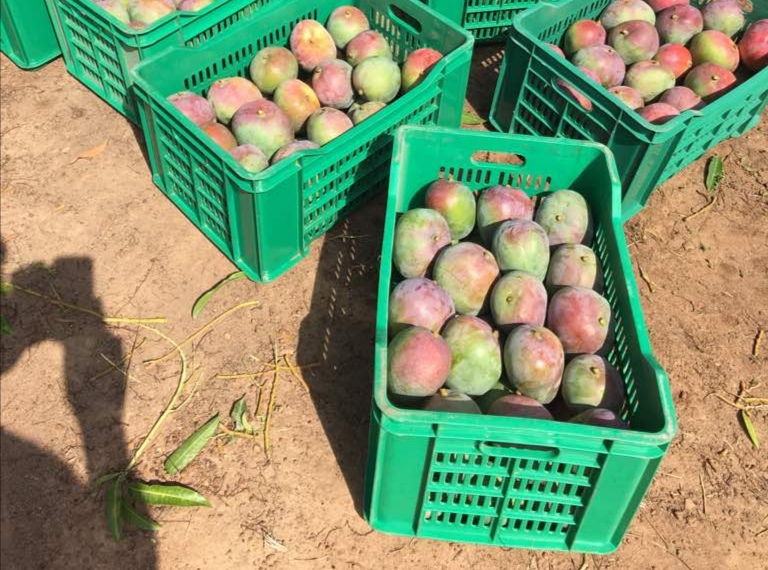
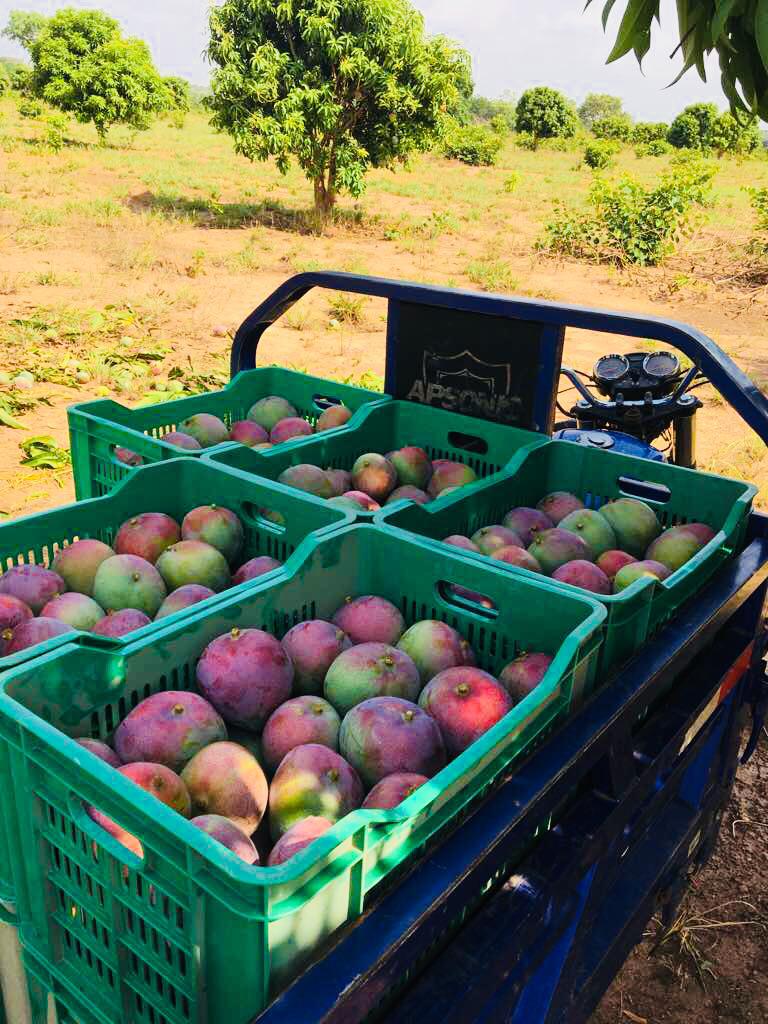
A team of over 70 women is responsible for the quality assessment.
They then use stainless steel knives to peel the mango and separate the pulp from the stone.
https://www.youtube.com/watch?v=-o2pGI5leo4
The pulp will then be cut in stripes and placed in clean trays ready to be dried.
Once dried, the slices are then packaged, placed in boxes, and properly stored.
All these procedures are carefully followed, observing international standards.
Our farmers have made the conscious decision not to add any sulphites or sugar to the mango, and that’s simply because the mango they grow is already naturally sweet, and once packaged it remains stable.
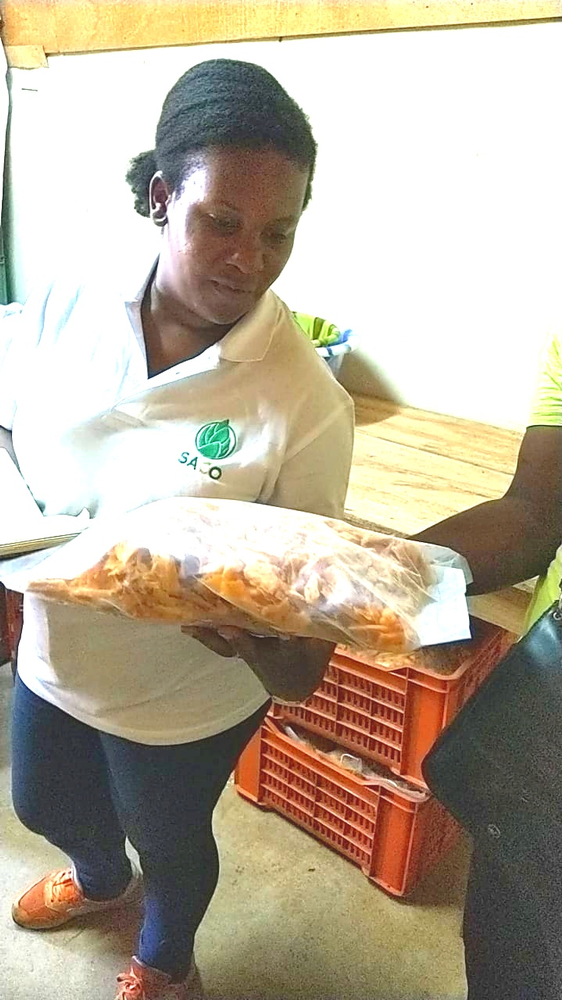
The final result is, therefore, a nutritious and delicious natural snack for the whole family to enjoy.
Now that the mango boxes are ready, the tricky part is not just selling, but selling them at a fair price.
There are three main factors that can determine whether the producer is in a more or less favourable position when it comes to selling their mango:
- Accessibility
- Infrastructure
- Affordability
Accessibility – the challenges faced by producers located in remote rural areas are far greater than those faced by farmers whose production sites are in proximity to the city.
Infrastructure – the poor condition of roads and bridges represent an important obstacle for small-scale producers based in remote areas when it comes to selling, especially when they have the ambition to reach a bigger market.
https://www.youtube.com/watch?v=Ihq4tq6w_do
Affordability – Producers that own trucks and can employ drivers have a huge advantage over those who don’t.
The vehicle helps them bring their goods out of the production area and gives them a certain degree of freedom in terms of choosing who to sell their produce to.
Unfortunately, those who can’t afford a farm truck, are often left with two equally unfavorable choices. They can either watch their produce go to waste or sell their mango to the “Transporter” for pennies.
Transporters are mostly men with trucks, whose business model entails driving across remote areas with cash to buy products at a price that is way lower than it cost to produce. They then go to the city and sell it at a much higher price to large-scale traders.
Small Steps Go a Long Way
The one thing we really love about visiting our producers is the opportunity to listen.
They share their knowledge, their experience, their joy, their frustrations and we listen.
We then start evaluating what we can do to help with what we have. This is how the idea of SACO started in the first place.
The 10kg we used to order when we first started, has now become 300kg a month.
Most importantly, the small-scale producers are the ones who decide how much their mango is worth and we pay what they ask.
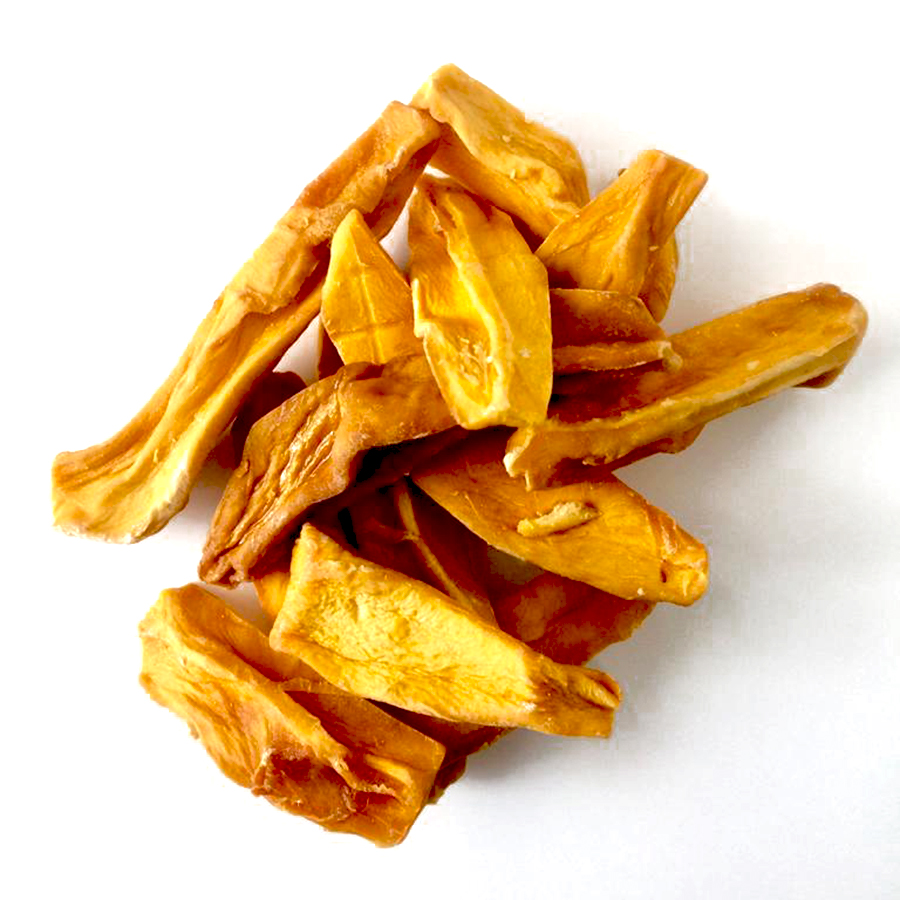
Although the numbers are still modest, we can already witness the positive impact that our initiative is having on both our producers and our customers.
On one hand, you can see how the producers feel respected and more confident about the future. On the other hand, the customers get excited about receiving a natural premium dried fruit knowing that their contribution helps secure the income of hundreds of families in the Ivory Coast.
The cupboard
To conclude, I would like to thank our producers for their hard work this season and all our customers and friends for supporting us in our mission.
Because we live in a world of convenience and instant gratification, it’s easy sometimes to forget that that single pack of dried mango we bought online or at our local grocery shop has actually been through a journey before reaching our cupboard.
But when you stop, even just for a moment, and reflect on where that delicious stripe of dried mango comes from; when you think about how your small contribution has made a producer smile because he or she has been able to put food on the table for their children or pay medical bills for their elderly. I guarantee you that that little slice of dried mango will taste even sweeter.
If you have never tried SACO dried mango before, here is your chance. ,,Order now!

Dried Mango - A Journey from the Orchard to the Cupboard was first seen on SACO Super Foods